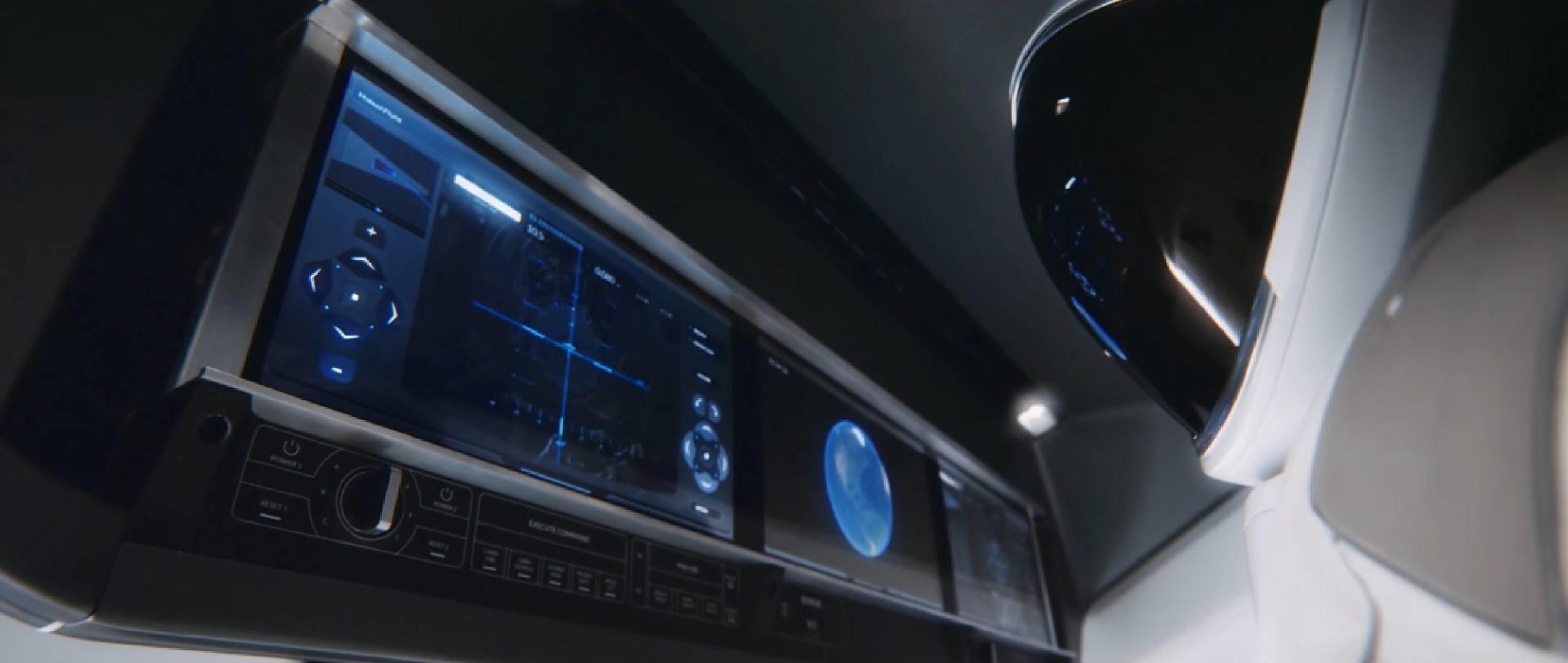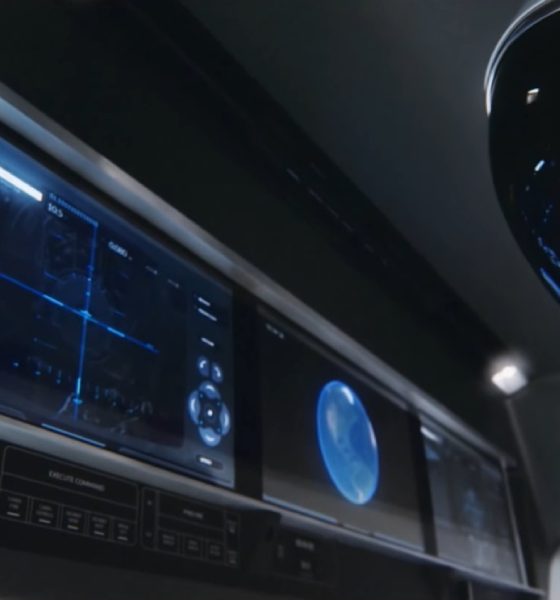

News
SpaceX’s slick new spacesuit balances form, function, and futuristic elegance
After Elon Musk hinted that SpaceX spacesuit details and photos would be revealed sometime this week, he followed through on his promise and has posted the first official photo of the suit that NASA crew and private astronauts will wear while aboard the manned Dragon 2 spacecraft.
https://www.instagram.com/p/BYIPmEFAIIn/
While not technically a true “spacesuit”, SpaceX’s creation is intended to protect crew aboard its Dragon 2 spacecraft in the unlikely event of depressurization while in orbit or following an abort after launch. These flight suits would be of no use on spacewalks, as they make movement extremely difficult while fully pressurized. However, SpaceX’s ultimate goal is to colonize Mars and possibly land humans on the Moon on the way there. To accomplish those aspirations, SpaceX will need a true EVA (spacewalk)-capable spacesuit before they begin to launch astronauts out of Earth orbit. Their flightsuit development will undoubtedly provide their engineers a great deal of experience along the way.
Within the circle of SpaceX fans, flightsuit development has attached itself to a considerable amount of hype over the years, with many hints and teasers that indicated it would be extremely slick and aesthetically pleasing.
During my IAC 2016 attendance, the same conference where Musk revealed SpaceX’s Mars architecture, Garett Reisman gave a talk on commercial crew, during which he indicated that the designers of the suit would have the honor of being the first individuals to test the suit in a true vacuum. The audience laughed nervously. In comments posted beneath the original Instagram post, Musk revealed that the flight suit had been tested to double the internal pressure it would normally be at while in vacuum, and said that the individual seen behind the visor was one of the suit’s SpaceX engineers. It is unclear yet if the suit has been tested with humans in a vacuum environment, but this reveal will undoubtedly precede future details, photos, and videos of the suit and its development.
In a Reddit AMA just over a year ago, Musk commented that “[the suit] needs to both look like a 21st century spacesuit and work well”. In order to achieve that difficult goal, SpaceX ultimately hired a famed costume designer from the film industry, Jose Fernandez of Ironhead Studios. Ironhead Studios has been involved in an array of extremely successful Marvel movies as a costume designer and concept artist.
With the finalized, vacuum-ready design now revealed, it is clear that SpaceX has managed to strike a balance between functionality and aesthetics, and the company has produced a suit that looks truly futuristic. While time will tell if astronauts are as happy as with the functionality as they are with the looks, it is likely that SpaceX is thoroughly testing the suits to ensure that they serve their NASA astronauts and private customers as effectively as possible.

News
Tesla FSD fleet is nearing 7 billion total miles, including 2.5 billion city miles
As can be seen on Tesla’s official FSD webpage, vehicles equipped with the system have now navigated over 6.99 billion miles.

Tesla’s Full Self-Driving (Supervised) fleet is closing in on almost 7 billion total miles driven, as per data posted by the company on its official FSD webpage.
These figures hint at the massive scale of data fueling Tesla’s rapid FSD improvements, which have been quite notable as of late.
FSD mileage milestones
As can be seen on Tesla’s official FSD webpage, vehicles equipped with the system have now navigated over 6.99 billion miles. Tesla owner and avid FSD tester Whole Mars Catalog also shared a screenshot indicating that from the nearly 7 billion miles traveled by the FSD fleet, more than 2.5 billion miles were driven inside cities.
City miles are particularly valuable for complex urban scenarios like unprotected turns, pedestrian interactions, and traffic lights. This is also the difference-maker for FSD, as only complex solutions, such as Waymo’s self-driving taxis, operate similarly on inner-city streets. And even then, incidents such as the San Francisco blackouts have proven challenging for sensor-rich vehicles like Waymos.
Tesla’s data edge
Tesla has a number of advantages in the autonomous vehicle sector, one of which is the size of its fleet and the number of vehicles training FSD on real-world roads. Tesla’s nearly 7 billion FSD miles then allow the company to roll out updates that make its vehicles behave like they are being driven by experienced drivers, even if they are operating on their own.
So notable are Tesla’s improvements to FSD that NVIDIA Director of Robotics Jim Fan, after experiencing FSD v14, noted that the system is the first AI that passes what he described as a “Physical Turing Test.”
“Despite knowing exactly how robot learning works, I still find it magical watching the steering wheel turn by itself. First it feels surreal, next it becomes routine. Then, like the smartphone, taking it away actively hurts. This is how humanity gets rewired and glued to god-like technologies,” Fan wrote in a post on X.
News
Tesla starts showing how FSD will change lives in Europe
Local officials tested the system on narrow country roads and were impressed by FSD’s smooth, human-like driving, with some calling the service a game-changer for everyday life in areas that are far from urban centers.

Tesla has launched Europe’s first public shuttle service using Full Self-Driving (Supervised) in the rural Eifelkreis Bitburg-Prüm region of Germany, demonstrating how the technology can restore independence and mobility for people who struggle with limited transport options.
Local officials tested the system on narrow country roads and were impressed by FSD’s smooth, human-like driving, with some calling the service a game-changer for everyday life in areas that are far from urban centers.
Officials see real impact on rural residents
Arzfeld Mayor Johannes Kuhl and District Administrator Andreas Kruppert personally tested the Tesla shuttle service. This allowed them to see just how well FSD navigated winding lanes and rural roads confidently. Kruppert said, “Autonomous driving sounds like science fiction to many, but we simply see here that it works totally well in rural regions too.” Kuhl, for his part, also noted that FSD “feels like a very experienced driver.”
The pilot complements the area’s “Citizen Bus” program, which provides on-demand rides for elderly residents who can no longer drive themselves. Tesla Europe shared a video of a demonstration of the service, highlighting how FSD gives people their freedom back, even in places where public transport is not as prevalent.
What the Ministry for Economic Affairs and Transport says
Rhineland-Palatinate’s Minister Daniela Schmitt supported the project, praising the collaboration that made this “first of its kind in Europe” possible. As per the ministry, the rural rollout for the service shows FSD’s potential beyond major cities, and it delivers tangible benefits like grocery runs, doctor visits, and social connections for isolated residents.
“Reliable and flexible mobility is especially vital in rural areas. With the launch of a shuttle service using self-driving vehicles (FSD supervised) by Tesla in the Eifelkreis Bitburg-Prüm, an innovative pilot project is now getting underway that complements local community bus services. It is the first project of its kind in Europe.
“The result is a real gain for rural mobility: greater accessibility, more flexibility and tangible benefits for everyday life. A strong signal for innovation, cooperation and future-oriented mobility beyond urban centers,” the ministry wrote in a LinkedIn post.
News
Tesla China quietly posts Robotaxi-related job listing
Tesla China is currently seeking a Low Voltage Electrical Engineer to work on circuit board design for the company’s autonomous vehicles.

Tesla has posted a new job listing in Shanghai explicitly tied to its Robotaxi program, fueling speculation that the company is preparing to launch its dedicated autonomous ride-hailing service in China.
As noted in the listing, Tesla China is currently seeking a Low Voltage Electrical Engineer to work on circuit board design for the company’s autonomous vehicles.
Robotaxi-specific role
The listing, which was shared on social media platform X by industry watcher @tslaming, suggested that Tesla China is looking to fill the role urgently. The job listing itself specifically mentions that the person hired for the role will be working on the Low Voltage Hardware team, which would design the circuit boards that would serve as the nervous system of the Robotaxi.
Key tasks for the role, as indicated in the job listing, include collaboration with PCB layout, firmware, mechanical, program management, and validation teams, among other responsibilities. The role is based in Shanghai.
China Robotaxi launch
China represents a massive potential market for robotaxis, with its dense urban centers and supportive policies in select cities. Tesla has limited permission to roll out FSD in the country, though despite this, its vehicles have been hailed as among the best in the market when it comes to autonomous features. So far, at least, it appears that China supports Tesla’s FSD and Robotaxi rollout.
This was hinted at in November, when Tesla brought the Cybercab to the 8th China International Import Expo (CIIE) in Shanghai, marking the first time that the autonomous two-seater was brought to the Asia-Pacific region. The vehicle, despite not having a release date in China, received a significant amount of interest among the event’s attendees.








